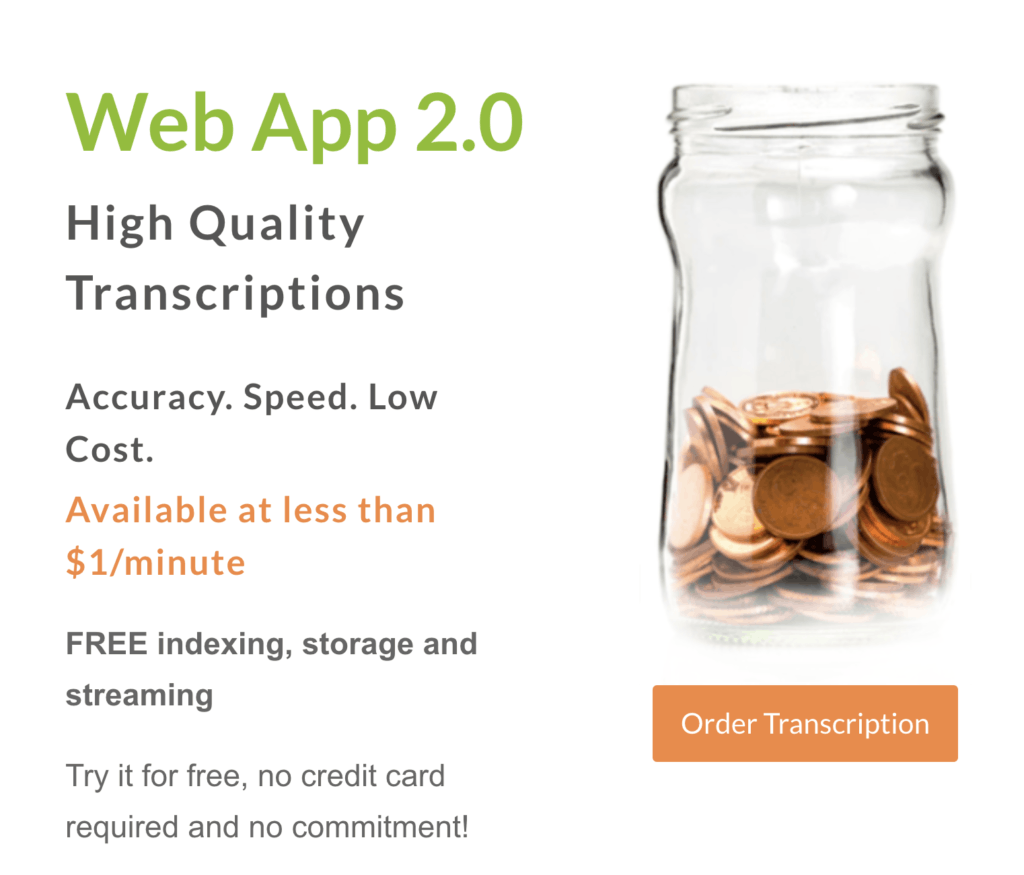Use searchable captions to crank up your video SEO Online video is transforming the way we…

Methods for Universities to Better Leverage Educational Videos
Here’s a scenario: You’ve put an amazing effort into creating quality marketing and educational videos for your university or learning institution. But now what? As counter-intuitive as this might sound, many schools face this challenge – great content, not sure how to use it.
You could stop at simply having great video collateral, hoping your current or prospective students naturally stumble upon it. Or you could take it to the next level and repurpose your educational videos content with very little effort.
Repurposing the content of your educational video allows you to increase your institutional video return on investment (ROI). This is done first through better learning outcomes. You will also increase your lecture capture investment by making videos accessible to the hard of hearing, extending their reach to second language learners, making your videos more searchable, as well as easier for students to discover. And the final benefit, of course, is that you will save money in the process by having content you can use across the spectrum of your educational and marketing needs.
Here are 4 ways learning institutions can better leverage their educational videos and achieve greater ROI:
1. Use your educational videos content to boost SEO
SEO is a leading component of any online marketing campaign. Google reported over 2 trillion searches in 2016 or about 100 billion searches per month. Over the course of 2018, it is anticipated that 74% of all search traffic will have been for video.
For SEO to work, web pages must first be crawled and then entered into a search engine’s index. Only once a web page is indexed can it be found through a Google search. In the case of online videos, search engines are unable to crawl the actual video content because only text, not spoken word, is visible to them.
Universities can overcome this indexing obstacle and enable successful SEO for video by using the video’s transcription data. This tactic creates a textual representation of the spoken content in videos, allowing search engines to crawl all of your video’s content and index the video accurately.
With only 8.5% of online search traffic making it to the second page of Google search, SEO enabled videos to offer a crucial advantage.
How to Format Your Video for SEO
The transcription should be pasted directly into the description section of the video or into the HTML of each of the web pages where your videos are hosted.
Make sure to take the time to format the transcript itself according to the standard hierarchy that you would use on any page. For instance, include Title, H2, bullets and other organizational page elements that effectively communicate to a search engine that your content is essential.
Without applying these page elements, you may be adversely affecting your SEO ranking. Be careful not to hide content either, as that will be noticed by search engines and your SEO ranking will be negatively affected.
2. Actively promote your educational videos as student study aids
Colleges and universities are required to caption online lectures and videos by the Americans with Disabilities Act and Section 504 of the Rehabilitation Act. Captioned videos ensure that deaf and hard of hearing individuals have equal access to educational content.
While educational video transcripts are not adequate alone for accessibility, they are still greatly useful for all students. By including video transcription along with a video lecture, educators give their students various new ways to interact with and study the material. These include:
- Reading along the with video
- Printing and annotating the transcription
- Searching for specific terms
- Referring back to a question without watching the entire video again
3. Make new content from your current educational videos
Video transcription boosts video ROI by letting you easily create more content.
The average five-minute video contains about 150 words per minute, which comes out to 750 words total. This is surprisingly in line with the length of the average blog post. For marketers and content creators, repurposing content for different mediums is vital.
Educational video transcripts can be turned into a variety of different content types, such as:
- eBooks
- Blog posts
- Product descriptions
- FAQs
- Infographics
- Emails
Depending on the nature of your video, it can be repurposed into one or more of the above content types.
For example, you can take the transcription of a webinar, pick out the key takeaways, and make a blog article. If the webinar goes into great detail on relevant information, it could even be made into an entire eBook.
4. Use transcripts to make sure the video message is heard
While closed captions are the best aid to ensure that everyone can understand your videos, video transcripts provide another excellent way for viewers to interact further with your content. They can read along with the video, print the transcription, highlight confusing words, and search and find keywords.
For people who speak English as a second or foreign language, the written version of a video’s dialogue helps clarify any speaker accents that the viewer may not be familiar with. Additionally, educational video transcripts allow viewers to go back and quickly find what they are looking for without having to rewatch the whole video. Whether you are communicating with your students, employees, or the general public, video transcripts ensure long-lasting understanding and reinforcement for everyone.
cielo24 proudly works with universities on video data solutions that boost your institution’s growth and visibility. Our searchable captions™, transcripts, and video intelligence work to power your video discovery, reach, engagement, and accessibility compliance. For more information on our video transcription, captioning and video intelligence solutions, contact us online or call us at 1-855-243-5624.
cielo24 is removing barriers to increase video marketing ROI, searchability and compliance for all your videos!
cielo24’s new Self Serve app is easy to use and extremely cost-effective. Within minutes a video can be uploaded to your account and you will receive a free machine-based, searchable transcript with keywords. Take a Video Captioning test-drive >>




